Marc MacYoung?
Dianna Gordon MacYoung?
Animal E-list
Crime Avoidance Lectures
Crime Blog
Colorado Classes
Contact Us
FAQs
Hosting A Seminar
Crime Prevention
Expert Witness
Knife Defense
Law Enforcement
Martial Arts
Military
Movie Consulting
Women's Self-Defense
Links
Our Linking Policy
On-line Store
Train with MacYoung
Testimonials
Terms of Use
Topics of Interest
Sometimes I lay awake
at night and ask
myself "Where have I gone wrong?"
Then a voice says to me, "This is going to take
longer than one night."
Charles Schultz
Martial Mechanics:
The Big Three
(Get a cup of coffee, this is a
long one)
On this page:
Specific Training, Specific Application |
Critical Three |
Bunkai |
Ouyou |
'Other' |
In Conclusion
Training -- especially martial arts, self-defense, defensive tactics and all the rest -- can be understood as two circles. One very large and one... well, let's just say it should be a lot bigger.
But before we go there, there are some things that you need to understand about 'training.'
First is that training and education are NOT the same thing. Training is very specific and goal oriented.
Education is a much broader and generalized concept. One that - in theory at least -- develops your rational and intellectual capabilities.
This as opposed to training which, teaches you how to do a specific task -- like run a particular program, do CPR, drive, etc. As such, training is a lot more specific in nature.
Why is this important? One, just because you're trained in one topic, doesn't mean you're trained in another -- much less educated. Two, just because you're educated doesn't mean you're trained either.
To give you specific examples, just because you're trained in martial
arts doesn't mean you know self-defense. (That's because self-defense
isn't a martial arts term, it's a
legal term.) Don't feel bad though, most lawyers don't understand
what
self-defense is either. That last one is an example of
A) Education not being the same as training
B) something that should scare the beejebbers out of you -- because
(over a
self-defense issue), the people either trying to put you in
prison or trying to keep you out are
lawyers.
Second, what you are being trained for is not the end goal itself. The action you are trained to perform works within a larger context. It is a means to achieve a different goal.
For example, driving. The end goal of driving is not driving. Driving is a method to get somewhere. You train to drive because of its usefulness in many aspects of life (i.e. getting to work, coming home, hauling provisions, taxiing people, etc.)
Third, training is a simulation of reality. No matter how intense, it is NOT the same thing as reality (unless you've been educated, trained and are now in internship -- on the job).
This is actually good thing because simulation allows you to develop what you need to have in live-fire situations without the consequences of not having them. This is a nice safety net when you are learning. Violence doesn't have a 'stop, do over' when you forgot to do something. Training does.
Fourth is there is a HUGE difference between fear management and danger management. I will go so far as to say that most -- martial art, self-defense, combatives, defensive tactics and whatever else -- training is more about fear management than danger management.
And that brings us to the two circles.
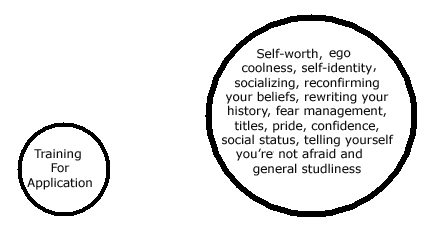
That second circle is the elephant in the room. It's not only what motivates a lot of people to train, but it's also a source of a lot of the bullshit that goes on regarding training. This applies to macho, fear-no-man, ultimate fighting, killer combatives and deadly warrior nonsense. But it equally applies to Grand master, 27th degree, doctor, shihan masters of 27 different martial arts.
That second, larger circle is about all kinds of thing other than training to do a particular task. People who are training for these reasons are not only likely to be looking for one-stop-shopping (e.g. all your self-defense needs in one, ultimate, wunder-system), but they are most likely to mistake advertising for knowledge. Primarily because they're not really there for application. They will be looking for a salesman to tell them what they want to hear, rather than what they need to know (about the smaller circle).
The details of the constant sales pitch vary, but it basically boils down to "No need to look elsewhere. Just keep on giving us your money and this system will give you all the answers." Whether this is the ultimate reality based self-defense trainer, student of the guru of the greatest and most deadly martial art on the planet, a buff, shiny and primped Mixed Martial Arts stud or the little tin god of the dojo with a wall of certifications showing all the martial art styles he's mastered. They're making their money selling you the second circle.
The funny thing is people -- who are deeply embedded in the second circle --will ALWAYS tell you what they are doing is the first circle. They'll swear on a stack of bibles even.
That's because the truth is, odds are they'll never get around to actually applying it. So they can play around with it and use it as an ego boost, past time and way to feel good about themselves. If they were to admit that, it really would be fine. Face it, this stuff is fun to do, exciting and challenging. And if it makes you feel better about yourself, even better.
But often the same pride and ego they're feeding says they can't come out and admit they're that shallow and superficial. That's why they pretend it's all about the first circle.
Except the information they are providing, the myths and lies they are promoting aren't useful for application. If you do try to apply it, you can run into deep trouble.
The rest of this article will focus on what NEEDS to be present in training for the smaller, application circle. Also how to tell if you're getting it (or not) where you are training.
Specific Training, Specific Application
Back in 1999 Black Belt Magazine published an article
Four Focuses of the Martial Arts. I know, because in that
article I introduced the concept that different focuses of the martial
arts require specialized training. More importantly, there is no
such thing as one training methodology that covers everything.
That is a simple but profound concept. If your focus is sports competition, then you are NOT learning self-defense(1). If your focus is self-defense, then you are not trained to win in the ring. If you are focusing on spiritual development, then you're not going to do well with either of those.
Although my personal focus is on self-defense/use of force, let me make something perfectly clear. Each of those focuses are perfectly legitimate and worth-while endeavors. There isn't one that is better, cooler or more 'real' than the others. Add to this they're very specialized endeavors.
That any particular training is all of those things is MARKETING! Someone is selling you the myth of a one-stop shopping martial art or ultimate self-defense system. And if you stop and think about it, the lie is obvious.
Time for analogies. Let's say that each focus is a particular
computing environment/ OS /platform. (That's Windows, Mac, Unix, etc.
for non-computer folks) If you know the slightest bit about this
subject, you'd know that programmers specialize in doing work in
specific environments. Sure such a person might have a bit of knowledge
about other platforms, but they will never be as good in another as
A) they are in their own or
B) someone who is a specialist in that other environment.
Okay, so what's the point? Well, if someone were to walk up to you and
say "I am a master programmer in ALL platforms!" you'd know he was full
of it. (If you're not into computers, think of a mechanic who
claims he's qualified to fix any kind of engine -- cars, motorcycles,
airplane, diesel trucks, ship, train, rocket, etc. You get the idea?)
Yet people don't bat an eye when someone claims to be able to teach you all the focuses. OR -- and this is equally bad -- he claims to be able to teach you the focus you want and then start teaching you another. This is especially endemic to teaching sports based, MMA systems and calling it 'self-defense.' But historic/traditional martial art systems from distant lands are often presented as such too.
This ignores specialized training for specialized results.
As you'll soon see, there are as many specific nuances, details and specializations for successful sports application as there are for self-defense. They're just different. The same goes for other applications.
Critical Three
The critical three is a litmus test for the quality of your training. IF
your training -- whatever focus it claims it is preparing you for --
is effective for that purpose, these three will be there.
In great detail.
From reliable, multiple sources.
And -- while we're at it -- confirmable by other professions, fields and science.
That's not asking too much is it? Well especially when it comes to self-defense and something that you'll be risking your life on it working. Or staying out of prison. But this applies to the other focuses too.
You will see these three categories in any system oriented on application instead of ego. In ego systems they are real vague and generalized. While in application circles they will be present in great, technical depth.
They are
Bunkai
The Japanese definition of Bunkai is "Analysis, disassembly,
demarcation"
It is NOT secret fighting moves hidden in the kata as some marketers claim. Nor is really even application. It's knowing what is going on inside of you.
The best story I ever heard about this comes from Sensei Lee Gray. While in Okinawa he had heard other karate students talk about 'bunkai' in terms of application. He went to his instructor and asked to be shown the bunkai of a move. Shinjo started explaining, "You position your arm here, you tighten these muscles, when you reach this position you..."
"No, no. I want to learn the bunkai of the move."
"You position your arm here, you tighten these muscles, when you reach this position you..."
"I know how the move is done. How do you use it?"
"Ohhhh you mean ouyou!" (application) (1)
For the purposes of this article we can think of bunkai as the 'nuts and bolts mechanics of the move.'
And yes, we are talking about pretty deep understanding. For example, there's a lot more to a punch than just sticking your fist out and wiggling it around. There is structure, pose, alignment, timing, muscle tension, weight transfer and the shaving away of unnecessary movement. A weakness or lack in any of these will cause technique failure.
Failure -- not because you did it 'wrong' -- but because the necessary components to develop and deliver force aren't there.
That's why I have such a problem with the idea of you doing it 'wrong' There's a damned good chance what you did is exactly what you were taught to do. In that sense, you did it 'right.'
Where the weakness commonly is is in what you were taught.
The reason why I like Lee Gray's story is because it shows you the level of detail that should be in bunkai. Generating force with your body IS an act of physics, physiology and kinesthetics. EVERY step in the process has specific and exact muscle tension, body alignment and movement.
It's NOT -- as is taught in so many McDojos -- everything comes together at the end of the move. It's there all along the process.
If your instructor wasn't taught 'bunkai' how can he teach you?
Someone who truly understands the move can go into microscopic detail anywhere along the process. They can explain what muscles are tight, which ones are loose and when that changes. How your body needs to be aligned, what position you shoulder should be in. WHY it needs to be in that position. Where your breathing cycle should be when you execute the move. When to turn your foot. Where you need to place your foot and countless other details.
Details that ARE demonstrable. Details that YOU can do. Now, not five years from now.
For example with correct structure and alignment during a punch, the teacher should be able to tell the students to freeze anywhere along the process. Then the teacher walks into the student's -- now frozen -- punch with his/her entire body weight. If the student's form is correct (because the instructor taught the details of bunkai) the teacher should be stopped in his/her tracks.
If the student is pushed back, his/her arm buckles or flexes than the mechanics/pose of the move are NOT right. The flexibility arising from poor structure is a huge source of power loss. Instead of hitting with a 'club' the student is punching with a spring.
This is a common problem in schools that overemphasize the end position and ignore the process of getting there. Is it the student's fault? Well quite frankly usually it's the instructor either doesn't know or hasn't taught the bunkai of that particular process. Instead the student flails around and tries to find out how to move on his or her own. Usually resulting in ingraining ineffective movement patterns.
Here is something that is important to understand. Bunkai is ingrained through kata. Repetitive motion burns the movement into your body's neural pathways. (What is mistakenly known as muscle memory). The more you do it a certain way, the more adept at doing it that way you become.
Here's the problem with that. Effective movement is just as easily ingrained as poor movement. Bad habits are as easy to ingrain as good ones.
This is one of my major complaints against ' aliveness training' being introduced before the proper mechanics are ingrained. You need to have correct physics and movement ingrained before you flood your body with adrenalin. Jump in too fast and without proper bunkai and you're usually ingraining not only a reliance on muscle, but damaging and self-injuring habits. Once they're in, they're a booger to get out.
The understanding of and the need to ingrain proper and safe body mechanics through concise repetitive movement is where many McDojo's fall down. They don't teach you the bunkai of the moves you are doing in kata. They just have you do the kata. This poor method of training has you focusing on the end pose you find yourself in, not the mechanics of the process to get you there.
Knowing about bunkai, the use of kata takes on a whole new dimension. On that, Iain Abernethy made a brilliant summation in his article " My stance on stances" when he said: It must always be remembered that we fight with the information within kata: we don’t fight with kata. This is very similar to how we cook good food by following recipes, but we don’t eat recipes!
Bunkai is the recipe of individual moves. Kata is the cookbook. But you're the cook.
In passing, I'd like to mention a subject where advertising is being presented as knowledge, that is the issue of adrenalin. If you have lousy internal mechanics and flawed bunkai, then yes, odds are good you will become adrenalin's 'bitch.'
You will fall apart and flail. And not just the first time (which is pretty common regardless how good your bunkai), but regularly. Bunkai and ouyou are major counter-forces against adrenal decay. But still adrenal conditioning is very much an 'other' category issue.
In closing there's also one other thing you should know about bunkai. Remember earlier I mentioned that these standards should be confirmable by an outside source? There is a simple test to see if you are being taught effective -- and safe -- bunkai.
That is make an appointment with a physical therapist and demonstrate how you were taught to execute techniques -- especially kicking and twisting moves. If you're feeling really confident in your training, make the appointment with a PT who specializes in sport rehab.
If the physical therapist proceeds to have kittens over what you are doing to your joints, then you were taught bad bunkai.
It's just a suggestion to go see a physical therapist now. The information you will get there can, and will, save you many visits to the same later on; when the cumulative damage of bad bunkai comes back to haunt you.
Ouyou
If bunkai is internal, then ouyou is external.
(Ouyou is pronouced like the 'OY' of 'oye vey' and 'yo' of yoyo)
While you might think this is the exciting part, actually ouyou is just as nuts-and-boring as bunkai. Like bunkai, it's mostly a matter of making sure certain things are present during the execution of a technique.
To begin with it's the drab, repetitive drills to learn things like the range of a punch. Or moving into the position you need to be in in order to deliver force. (That's way more sexy and exotic when it's called by the Japanese ma'ai, but it's still positioning). It's where you need to be for a move to deliver maximum power without destroying your structure while trying to reach him. Then it's practice, practice, practice to be able to judge the distance and move into position. You train, train and train some more to be able to recognize that spot. Then, with unconscious speed, you either move into it fast, see him coming into it or when you're in it fire off that move. He's coming into range for this punch... POW!
In a blink of an eye that move happens. That's ouyou.
It's also ingraining the habits to create the elements that need to be developed in order for a technique to work. For example a common formula for throwing systems is "Enter, Break, Throw"
That is (safely) enter, seize your opponent and break his balance. Once his balance/structure is affected, he is much, much easier to throw. If you don't develop the habit of breaking his balance, you're going to rush in and ... well it will be like trying to throw a statue. That's if the statue doesn't proceed to beat the snot out of you.
Despite all the wowie kazowie things you might think ouyou is, it's actually kind of formulaic. It's not action hero, killer kung fu combatives, it's '1+ 2=3' stuff on how to apply the move.
You don't get it without working at it. You don't learn it by osmosis. You learn it by being told about it and then, working to develop it. For example, hours of bag work of stepping into the range of a punch, throwing it, stepping back and doing it again. Getting the bag moving and firing the punch when it swings into range. The bag moving and you do too, but you're not going to get to that level with practicing the first two. THEN you do it on a moving -- and attacking -- opponent.
Ouyou is often difficult to ingrain not because the move itself is complicated, but because we tend to unconsciously add in things that make it less effective. Or some other program inside our heads kick in and has us do something else.
For example, defensive movement consists of only two things. Moving and shielding. Moving because it's hard to get hit if you're not there. And shielding ... well blocking is part of it, but it's a whole lot more. (That's a another example of ouyou right there.)
That formula is also a diagnostic tool. If you're getting hit, you're NOT doing one of those two things. What aren't you doing that is getting you hit?
Ouyou is not just knowing about move and shield, it's making sure you do it under stress. Yet, the hardest thing to ingrain is movement. There's a train coming at you, get off the tracks. It sounds simple in theory. Except when you're all excited, adrenalized and deep in the Monkey Dance, primitive parts of your brain are going to be telling you to not just to stand on those tracks -- but to charge head-to-head with that on-coming train. Hey diddle diddle, straight up the middle. Not too smart, but it is a default human conflict behavior.
That default behavior doesn't do much for moving off line to keep from getting hit. In fact, it guarantees you're going to get hit more. Ouyou is drilling until you override this default program and replace it with whatever defensive movement your system uses.
Ouyou is what you need to know about how to make a move work. It's ingraining those standards, aspects and habits necessary to succeed -- not just in the safety and comfort in the dojo, but also against someone who doesn't like you.
Now you might just think that I've contradicted myself over my earlier statement about 'aliveness' in the bunkai section. Not at all. Bunkai and ouyou are both processes. In the beginning all the student does is work on the bunkai. When a degree of competency is achieved, you start making the student apply it -- then you introduce adrenalin.
For example, with a defensive move, starting slowly. You make ONE slow, but committed attack on the student starting at a distance. You tell them what is coming and close the distance. The student moves and shields. Even going slow, if the student doesn't move and shield, he/she WILL get hit. You don't get slick, fancy or throw anything else in. One basic attack, slowly and moving into attack range.
But, as the student gets better at making sure the moving and shielding is always present, it's time to crank it up. Then still starting at a distance, you speed up ... again with full force. Once the student is doing well, then you start doing the same attack again, but from much closer.
The student is now learning the ouyou of the defensive move. But more than that, application under pressure while adrenalized and facing real force. Later you add in other adrenalin/emotional factors, but NOT until the student can reliably prevent his or her nose from being driven through the back of his/her skull.
Incidentally this drill has a name. It's called ippon kumite.
It is not done as so many schools do it with statuesque pauses and with blows that stop eight inches away from the person. Without legitimate force and threat, you never develop the correct bunkai, ouyou or mindset to execute movement.
'Other'
The contents of this category are hard to specifically define. Namely
because it's determined by what focus and application you're training
for.
But, whatever focus it is, there's a whole lot of detailed information in the category that directly relates to the nuts-and-bolts details of that application. Not some macho, huff and puff generalization about developing the warrior 'attitude.' or mystical, in five years this will be important. I'm talking here-and -now practicality and understandability about the subject.
(As an aside, also be extremely cautious about statements that are both amazingly specific and at the same time gross over-generalizations. For example, "All violence start with sucker punches and pack behaviors." Really? All violence? An equally bad sign is marketing disguised as teaching. Learn to listen for someone who never stops selling 'how good the system is.' If it works, it's because YOU can make it work. If he's still selling, then he isn't teaching you what you need to know. He's pandering to people's second circle concerns.)
Here is the key point about this 'Other' category. Application does not exist in a vacuum.
Another way to understand it is, using your training is never just about one thing. Application occurs within a context and influenced by external issues. The 'other' category is about that context and how other issues affect application.
For example, my focus is self-defense/use of force. Look at all the issues just related to self-defense on this Webpage. There's legality, psychology, sociology, physiology, social theory, adrenalin and countless other issues that WILL effect whether it is self-defense or if you will be -- rightfully -- arrested for illegal violence.
And that's just an introduction to the topics.
Where does this information come from? Other fields. For example, I get information about law and the legal system from lawyers and law professors. I get information on trends in crime from the Bureau of Justice Statistics, FBI, cops and criminals themselves. I get information about force, physics and the effects of power from scientists, physicists, trainers, physical therapists and doctors. In fact, they double check it before I present it.
As such, the information is both known and confirmable by outside sources. Legal standards regarding use of force come not from a martial art or a foreign combative system, but from your country's penal and civil codes. So what makes you think your sensei is qualified to teach you what 'self-defense is?' I ask, because I have personally witnessed a neck break, from behind on a downed opponent AS self-defense.
I do not claim to be an expert in these fields. I introduce and tell you to go talk to and learn from an expert -- an expert who knows a whole lot more about the depths and complexities of these particular subjects than I do. Is your instructor doing that?
I know for certain in the application of force these issues WILL become relevant. If you apply your training outside the confines of the training hall or sports ring you are going to face them. As such, they are germane to training -- not if it happens -- but for when it happens. That's the small circle of application.
An in-depth discussion about the parameters of self-defense is beyond the scope of this page. However I assure you it is far more complicated than
The above statements are not only common in programs pandering to the second, larger circle, but are as deep as those programs ever explore the topics. This while claiming they teach 'self-defense.'
What a great way to get raped in the prison showers -- especially if you're being taught a weapons system or a system that claims it's only interest is in teaching you about combat or dealing with asocial violence.
It's easy to claim you 'have that too' or 'we do that too.' But pay close attention to how much time is actually spent on these important subjects. And this, in as much depth and understanding as there is to bunkai and ouyou. If you're not getting this, then you aren't being trained for self-defense application.
There are many more issues involved in this 'other' category. As I said they are focus dependant.
What are the tactics and strategies for winning a sports competition? What other elements are there? I assure you they are just as complicated, involved and specialized as the details of self-defense.
I've sat down with professional trainers and had them explain the details, nuances and subtleties of a championship fight. Let me assure you, they are as complex as rocket science. What's more impressive, is that they are done on the fly. Under circumstances that change from second to second and require different 'firing solutions' with each change.
And what about the business of professional or semi-pro 'fighting?' How do you do a good interview? How do you present a good image that will inspire fans? How do you make a good show for the audience? How do you farm the media and publicity? These are ALL elements within that focus.
Elements that if you are going to be successful in application, you need to know.
There are many other elements in the category as well. One of the bigger ones is 'henka ' (Japanese for variations). This is probably one of the most overblown and yet misunderstood concepts in the second, larger circle. What's ironic is how often the second circle has a huge collection of techniques.
This sounds like a contradiction, but having 10,000 techniques that you only half-ass know is way less effective than having five techniques that you know really well. Including how to alter, mutate and tweak each one a hundred different ways to work in various circumstances.
Five techniques -- that you know the bunkai, ouyou and how to immediately adapt them to fit the circumstances -- are going to be way more effective in application, then 10,000 half-baked ones (That 10,000 is known as technique collecting and it usually has ouyou and bunkai that suck.)
Are you being taught the depths of your art and the henke? (This includes when to either change to a different move or vary the technique because of circumstances.) Or are they just piling stuff on to keep you from noticing what they're NOT teaching you about application?
Piles and piles of bad information doesn't make up for a lack of good information.
Also in this category comes the issue of training to cope with adrenalin. A huge point of contention between traditional martial arts and fashionable uber-systems is the 'dreaded' adrenalin rush. Unfortunately the marketing and confirmation bias of the second circle is winning this war. Which is too bad because they are just as screwed up and oriented on making money as the McDojos they condemn.
Realistically, the charges against martial art belt factories not addressing the adrenalin issue are legitimate. However, just because the critics are right about that, does not automatically mean their answers are any less wrong. In fact, they have the exact same problem as the traditional martial art schools they condemn -- but from the other direction.
The truth is this article has its roots in dealing with Kool-Aid drinkers from both camps. People who are really short on live-fire experience telling me that they have the ultimate training system for whatever you might face. (I call this the Dr. Bonner's Miracle Cure-All Elixir, and it's seriously second circle.)
The use of the Japanese terms was very intentional to point out what is missing from 'modern' systems that pride themselves in throwing you into sparring and dealing with active resistance from the beginning. Simply stated, they tend to suck at teaching both bunkai and ouyou. Elements that you especially need to be able to perform under adrenalized conditions (3).
Flip this issue around, however. If you look at your average strip mall dojo, you will see bad bunkai and questionable ouyou. Lots of it. Sometimes bordering on the absurd. Even in schools that have passable versions of those two, they are not commonly teaching people how to perform under adrenal stress!
Not a good idea if you're supposed to be teaching 'self-defense.'
Arguably, with the bad versions, this lack is because if the students don't test it out, they never find out that it doesn't work. This is good for the school and business. The more common excuse of 'insurance and safety concerns still does a disservice to the students.
My point is both traditional martial arts and new 'combative' approaches are missing important components. Components that the other side has ...well at least theoretically. But, that's why it's such a stupid squabble. They both have only half of the formula and are arguing over which half is 'right.'
When you look at it this way, you realize that the argument over the subject isn't about application, it's about that second, big circle and getting people into your camp. And when that becomes a driving factor, getting your money for bad training isn't far behind.
In conclusion
This article is a introduction to what I teach in my
Martial Mechanics seminar. Where I help
people discover how the 'critical three' manifest in their art and --
more importantly -- how elements of each have been glossed over, lost or
misunderstood over the years.
Martial Mechanics is not only about the mechanics and force physics, but also diagnostics. A mechanic is someone who doesn't just know how to fix a car, but knows how to diagnose what the problem is.
This article has not been a condemnation or dismissal of all the hard work you have invested into your training. But rather to get you thinking about what you may not have been taught or what you might have allowed to unconsciously slip from your teaching.

1) Can it be used as such? Technically yes, but not without major tweaks, revisions and additional training. You're far more likely to end up with 'mutual assault' (fighting) charges than stay within the parameters of self-defense if you try to use it outside the ring. Return to Text
2) When I heard this story I asked a friend about it and he confirmed this. When I asked him why he never told me, he replied, "You never asked." Pinky, I'm going to have to hurt you. Return to Text
3)
Thereby ingraining an over reliance on muscle, speed and
physical conditioning to do the work for you. Which works fine
... until
a) you run into someone who is bigger and stronger than you
b) you get older
c) you sustain an injury
d) you run into someone who knows how to counter strength
e) you run into a weapon or
f) multiple opponents
So basically as long as you limit yourself to fighting smaller,
skinnier, middle class individuals ... you'll be fine.
Return to Text

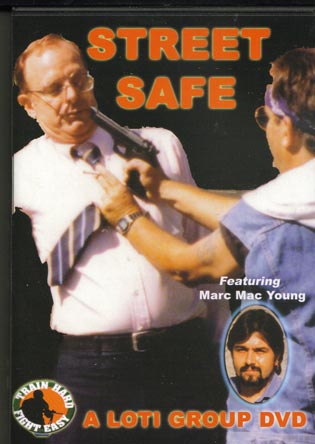
Street Safe: How to Recognize and Avoid Violent Crime
Learn More >
Order Now!
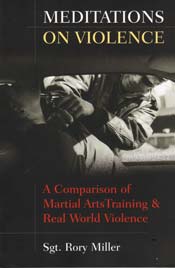
Meditations on Violence
Learn More >
Order Now!
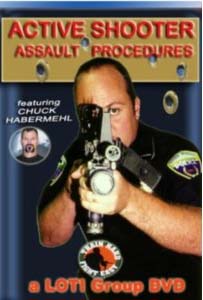
Active Shooter Assault Procedure DVD
Learn More >
Order Now!

Ending Violence Quickly
Learn More >
Order Now!

The Missing Link: Self-Protection Through Awareness, Avoidance and
De-Escalation
Learn More >
Order Now!

TACSAFE
Learn More >
Order Now!

Taking It to the Streets
Learn More >
Order Now!

Street Smarts, Firearms and Personal Security
Learn More >
Order Now!

Real World Self-Defense
Learn More >
Order Now!

A Bouncer's Guide to Barroom Brawling
Learn More >
Order Now!

Cheap Shots, Ambushes and Other Lessons
Learn More >
Order Now!
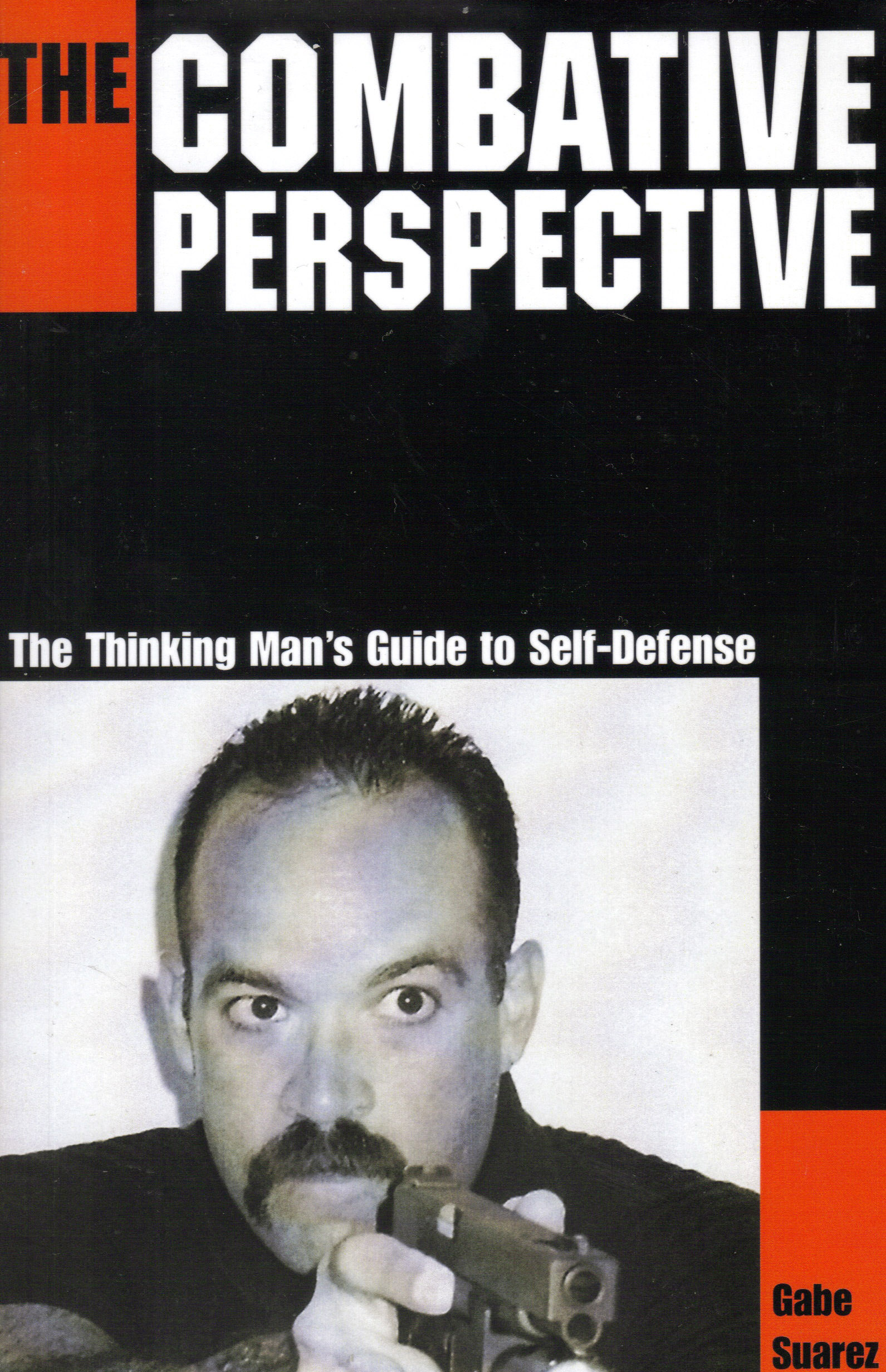
The Combat Perspective: A Thinking Man's Guide to Self-Defense
Learn More >
Order Now!

Surviving a Street Knife Attack
Learn More >
Order Now!

Real Fighting
Learn More >
Order Now!

Beyond Brazilian Jujitsu
Learn More >
Order Now!
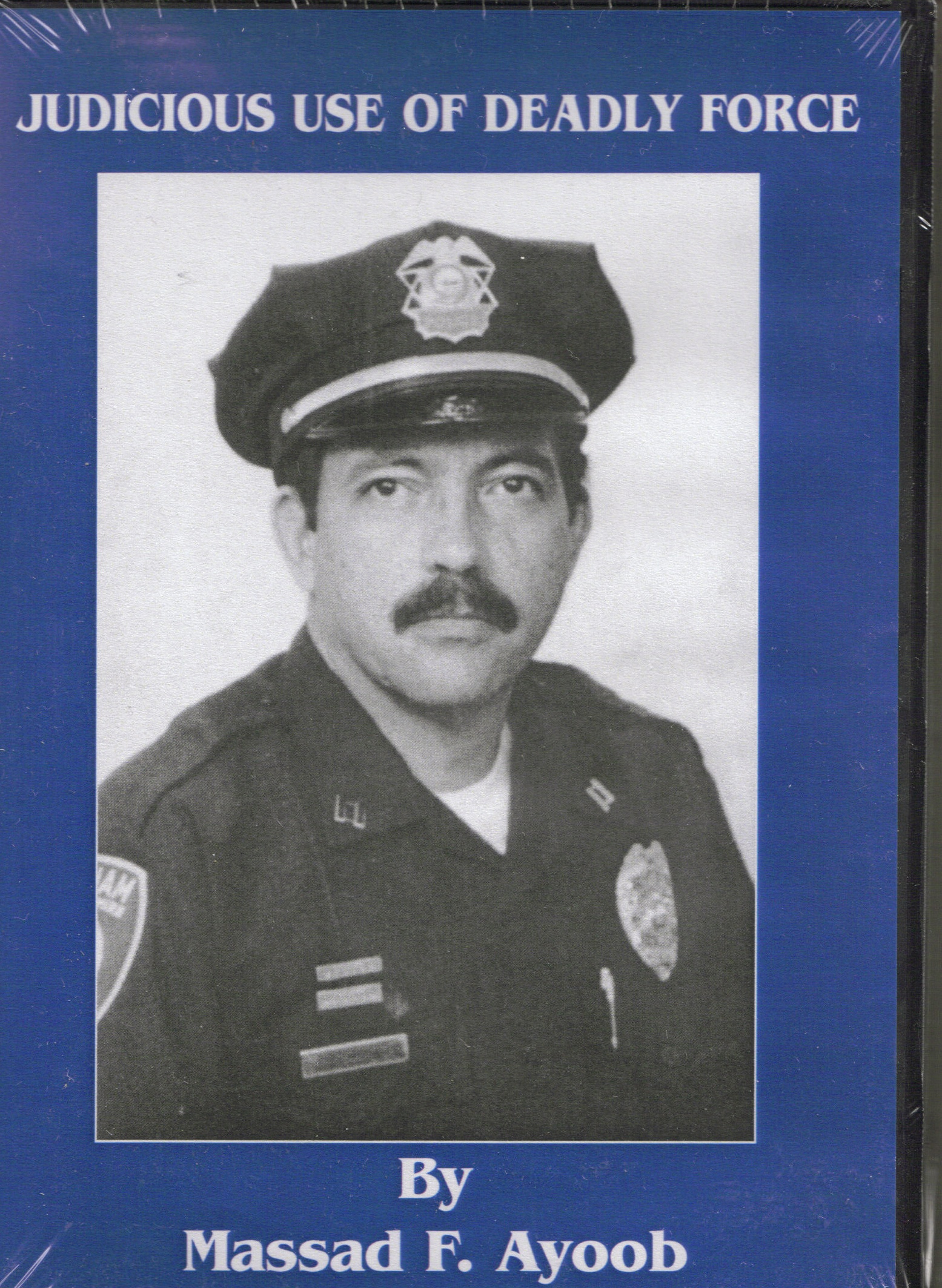
Judicious Use of Deadly Force
Learn More >
Order Now!

Reflex Action
Learn More >
Order Now!
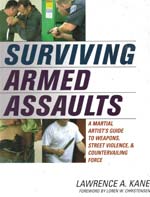
Surviving Armed Assaults
Learn More >
Order Now!

Escape Combatives
Special Bonus Feature
ESCAPE DRIVING
Learn More >
Order Now!
Christian Theme
Christian Theme
Exploits of a MA Cult
| About navigating this site | Animal List | Bibliography | Bullies | Burglary while on vacation | Classes in Colorado | Car Jacking | Children and Martial Arts | Child Safety | Criminal Mindset | Cults in MA/SD | De-Escalation | E-mail Dianna | E-mail Marc| FAQs | Have MacYoung speak about crime | Home Page | Home Defense | Hosting a Seminar | Fear | Five Stages of Crime | Knife Fighting | Legal Issues | LEO/Correctional Officer/EMS | Linking policy | Links | Martial Arts | Photo Gallery | Property Crime | Psychology | Rape | Robbery | Safe Dating | Self-Defense Training | Selling your books/DVDs on NNSD | Seminar Schedule | Stalking/Domestic Violence | Street Fighting | Terms of Use | Testimonials | Train with Marc MacYoung | Who is Dianna Gordon MacYoung? | Who is Marc "Animal" MacYoung? | Victimhood | Workplace Problems | Zero Tolerance | ||
|
? 1998-2010 No Nonsense Self-Defense, LLC. All rights reserved. |